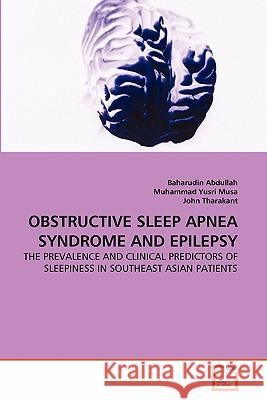Obstructive Sleep Apnea Syndrome and Epilepsy » książka
Obstructive Sleep Apnea Syndrome and Epilepsy
ISBN-13: 9783639310009 / Angielski / Miękka / 2011 / 92 str.
Epilepsy and Obstructive Sleep Apnea Syndrome (OSAS) are both associated with abnormal brain activity and frequently coexist. Epilepsy patients were found to be drowsier when compared with general population using the Epworth Sleepiness Scale. The aim of this study is to determine the association of obstructive sleep apnea syndrome (OSAS) in epilepsy patients, as well as the prevalence of obstructive sleep apnea syndrome and the predictors of sleepiness among epileptics in South East Asian patients. Five of sixty participants (8.3%) were diagnosed with OSAS and four of them were males. OSAS was mild in one patient, moderate in two patients and severe in the other two. Age, neck circumference, ESS score and BMI were significantly associated with OSAS (p value
Epilepsy and Obstructive Sleep Apnea Syndrome (OSAS) are both associated with abnormal brain activity and frequently coexist. Epilepsy patients were found to be drowsier when compared with general population using the Epworth Sleepiness Scale. The aim of this study is to determine the association of obstructive sleep apnea syndrome (OSAS) in epilepsy patients, as well as the prevalence of obstructive sleep apnea syndrome and the predictors of sleepiness among epileptics in South East Asian patients. Five of sixty participants (8.3%) were diagnosed with OSAS and four of them were males. OSAS was mild in one patient, moderate in two patients and severe in the other two. Age, neck circumference, ESS score and BMI were significantly associated with OSAS (p value <0.05). Epilepsy-related risks (type of seizures, duration and type of AED) have no significant association with OSAS. Forty- nine percent of the abnormal physical findings found in OSAS group were related to deviated nasal septum and inferior turbinate hypertrophy. The prevalence of OSAS among epilepsy patients is 8.3%.











